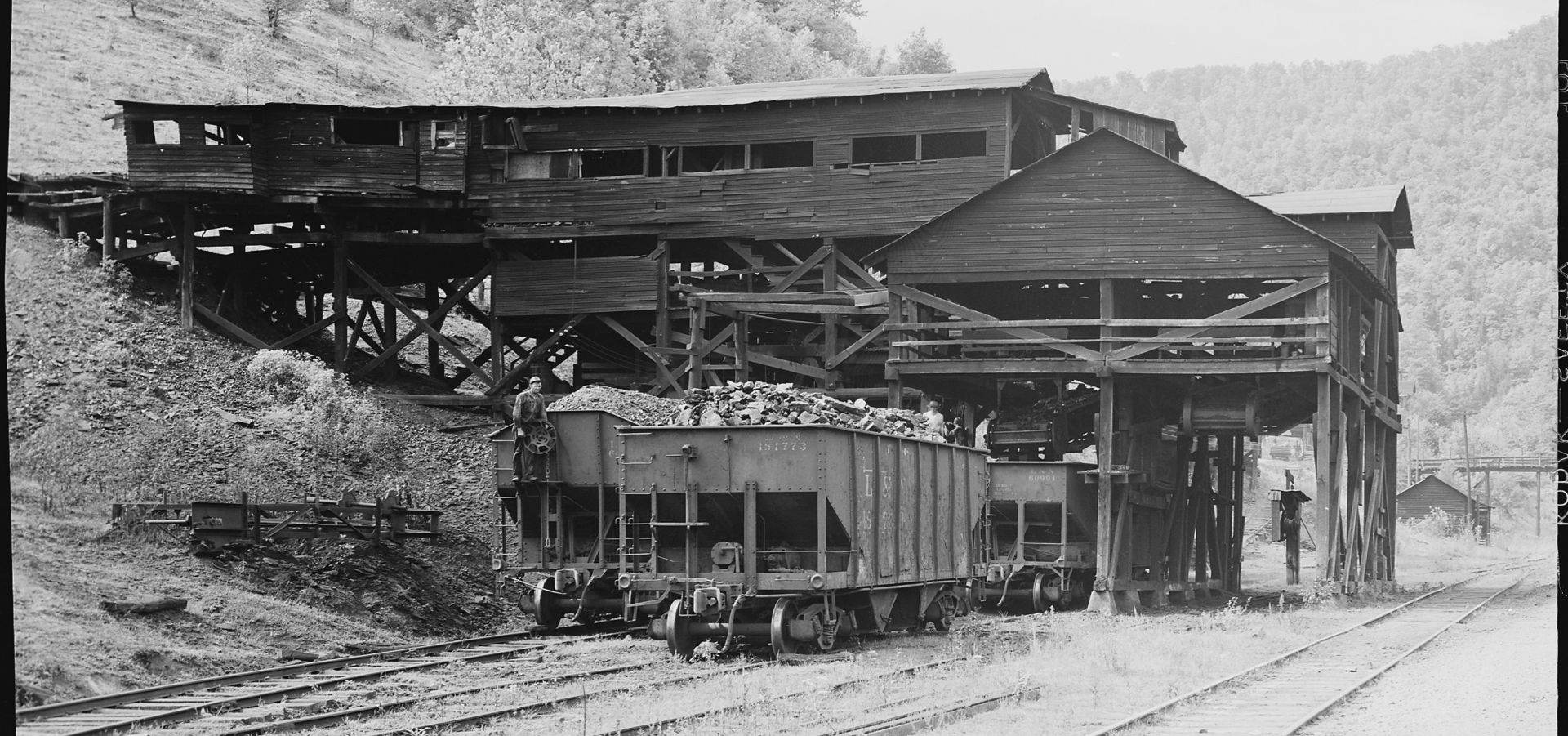How do communities deal with the energy transition, in particular the loss of mining jobs? Ben Paulos takes a look at the documentary After Coal and two coal-dependent communities in Wales and Kentucky.

Coal has been historically crucial in Appalachian communities (Photo by Russel Lee, 1946, modified, from the American National Archives and Records Adminstration)
In the opening credits of the new documentary After Coal, the camera floats serenely over a coal power plant enshrouded in the mist filling an Appalachian holler.
Change is indeed coming to coal country. As coal fades into the misty past, what becomes of the communities dependent on coal mining?
Concern is growing that coal-dependent communities will be hardest hit by the transition away from coal. As coal companies shrink and go bankrupt, they may be unable to clean up abandoned mines and unable to pay for pension and health expenses for retirees.
In After Coal, director Tom Hansell, an associate professor at Appalachian State University, compares the experience at coal communities in Wales and Appalachia. In ten year periods, each region lost 20,000 mining jobs – Wales first, in the 1980s, followed by Appalachia in the 1990s.
For decades the coal industry has worked to reduce labor expenses. Early on, it was through low wages, economic oppression in company towns, and unsafe working conditions. But angry workers organized and formed unions, winning better conditions through contentious strikes.
Nevertheless, the companies pushed on. If workers had to be paid more, then the solution was fewer workers. Mining moved to surface mining (or “strip” mining) and replaced workers with mechanization. When underground mines in Appalachia were undercut by cheaper strip mines in Wyoming, companies blew off the top of the mountains, turning them into strip mines. This “mountaintop removal” took the damage from coal mining to a whole new level, and spurred stricter regulations from the Obama Administration.
Still, over the decades mining companies have been wildly successful in producing more coal from fewer workers. The number of coal miners fell from 725,000 in 1910 to 80,000 in 2013, even as US coal production doubled, boosting output per employee from 0.69 to 12.25 thousand short tons per worker, according to Sourcewatch.
Now demand for coal is declining, leading to further job loss. Coal is being pushed out of the electric generation market by cheap natural gas, greater energy efficiency and declining demand, and the growth of renewables, especially wind power. Regulations on air and water pollution, most notably the Mercury and Air Toxics (MATs) rule and the Clean Power Plan, are putting further pressure on coal.
Coal demand has fallen to levels last seen in the 1980s, and coal’s share of electricity generation has fallen from over half to less than one-third. In April, Peabody Energy, the world’s largest coal mining company, joined Arch Coal, Patriot Coal, Walter Energy, and Alpha Natural Resources in bankruptcy.
The US Energy Information Administration expects coal production will fall another third by 2030 if the Clean Power Plan is implemented as proposed (it is currently on hold due to a legal challenge). Coal production at that level implies a US workforce of less than 60,000 miners.
The decline of coal has helped spur the global labor community to create a “Just Transition” plan for industries that will be affected by the move to a more sustainable society. The International Trade Union Confederation says Just Transition “maximises the benefits of climate action while minimising hardships for workers and their communities.”
Or more to the point: “There are no jobs on a dead planet.”
According to After Coal, a Just Transition has been playing out in Wales, with some surprising results. Cut free from the job security of mining, and forced to find new livelihoods, former miners have come up with some surprisingly entrepreneurial ventures. An outdoor recreation business with 30 employees caters to business executives on nature retreats. A reclaimed mine has been turned into a massive mountain biking park, bringing in 60,000 cyclo-tourists a year and spurring the development of 15 bed and breakfasts.
The transition to a post-coal economy is more nascent in Harlan County, Kentucky, as the community comes to terms with their loss. Drug abuse and out-migration have been rampant, as one of the poorest counties in the country deals with unemployment levels as high as 19.4 percent in 2013.
In a kind of community group therapy session, Harlan County residents have created a series of theater events, Higher Ground, that explore their identity and their goals. A project of Southeast Kentucky Community & Technical College, the series taps local residents to “explore the storied past and foggy future of this Appalachian coalfield community.”
Coal has been a consistent theme. “All everyone cares about is coal,” one actress lamented in After Coal. “Out of all the things we are, we picked coal? I appreciate every miner that’s ever been. But I am more than just a rock in the ground. So is this place.”
As Harlan County residents work their way out of the hole they are in, economic development assistance and a social safety net being offered by the federal government will be vital. But no less important will be the creativity and drive of the residents themselves. Life after coal seems to be thriving in Wales. Harlan County too can transition to a just and sustainable economy, after coal has disappeared into the mists of time.
Bentham Paulos is an energy consultant and writer based in California. His views are his own, and don’t necessarily represent those of any of his clients.